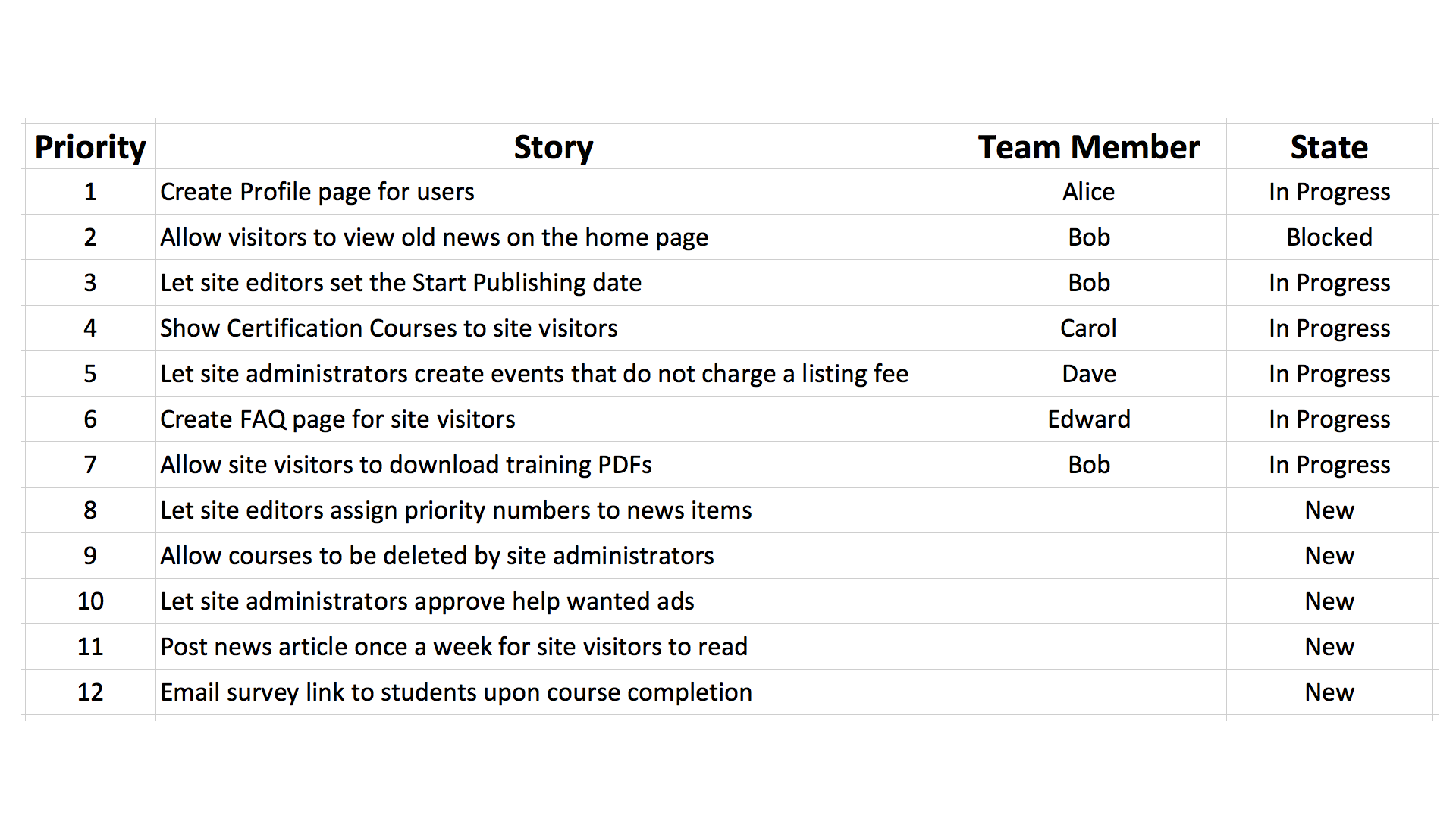In the previous article, we saw how positive illusions can mislead us to think that we are better at something than we are in reality because we judge ourselves by criteria of our own choosing. We also learned that it takes an ability to see things from another’s perspective to break out of such illusions. In this article, I’m going to describe a way to help your team break out of the positive illusion they may have with respect to work-in-progress by seeing and feeling the impact of high WIP. You can do this by making one simple change to your daily standups.
Why is high WIP bad?
Why does limiting work-in-progress matter? Well, high WIP means you are starting many things, but not finishing them. You have to ask yourself, is the goal to start something or to finish it? Is started but unfinished work valuable? What are the costs of juggling so much unfinished work? What are the costs of delay?
One cost of starting a new task before you’ve finished another is that it delays the first task. But you may argue that the only reason you started the second task was because the first task became blocked. But why did it become blocked and is starting a new task really the best thing you could be doing in response to getting blocked?
Instead of picking up a new task, you could seek to have the work to clear the blockage escalated. Alternatively, you could ask around on your team to see if you can help unblock someone else while you wait for your task to become unblocked. There are many alternatives to simply picking up a new task.
Visualising WIP
So how do you get a team that is used to simply picking up the next task whenever they get blocked to change their behavior? They may be under the positive illusion that this is a perfectly reasonable, in fact, an effective way to manage work. How do you break out of that illusion?
You help them to visualize the impact their choices are having. Remember, people don’t change by thinking and analyzing. They change by seeing and feeling.
Standups and the three question format
How do you conduct your standups? Do you go around the group asking the three questions?
- “What did you do yesterday?”
- “What do you expect to do today?”
- “Are you blocked?”
This kind of standup has the advantage of creating some positive peer pressure to make sure you’re making progress on something each day, but it has two disadvantages: it can hide high WIP and it fails to show the connection between the work getting done and the backlog your product owner worked so hard to prioritize.
Walking the board
What if, instead of just using the three questions format, you also “walked the board”? I’m going to assume you have a prioritized list of stories. Maybe you do sprints and this is your sprint backlog or maybe you work in more of a Kanban style. Either way, you can walk the board. Show the team the prioritized backlog. Walk through all the “in progress” stories and ask about each one in turn. Ideally, your story tracking tool, whether it be an actual physical board or a software tool, tracks who is working on a story. If the same names are showing up multiple times on incomplete stories, you may have a high WIP problem. For example, in the table below, Bob shows up three times: once with a blocked story and twice with in-progress stories.
The standup itself takes a long time when you have high WIP, because story after story is reported as being blocked and your two-pizza team has ten pizzas worth of stories in progress. This is where you will need the help of your product owner or possibly the team’s manager. You’ve visually demonstrated the high WIP situation. The team’s manager should be educated about the negative impacts of high WIP and be able to speak about this to the team. Share with the team ideas for what to do when they become blocked. For a more self-managing team, giving them the awareness may be enough to produce the change.
If the team can agree on a WIP limit, great. This may be a challenge because of the pressure to keep delivering and it may be that you have a lot of dependencies on other parts of the organization that are not as agile or for whom you aren’t a high enough priority to get better responsiveness to your requests to be unblocked. Nevertheless, an awareness of when you have high WIP, coupled with a knowledge of the negative impacts of such, and an action plan for lowering WIP can be transformational for your team.
I would love to hear what you thought of the article, so feel free to comment below, on The K Guy Twitter, or on The K Guy Facebook fan page.

